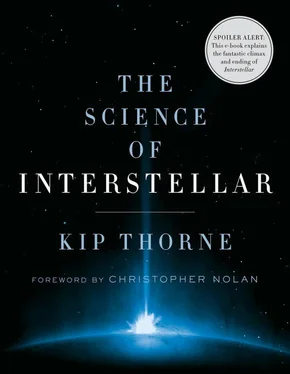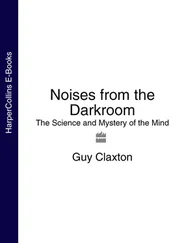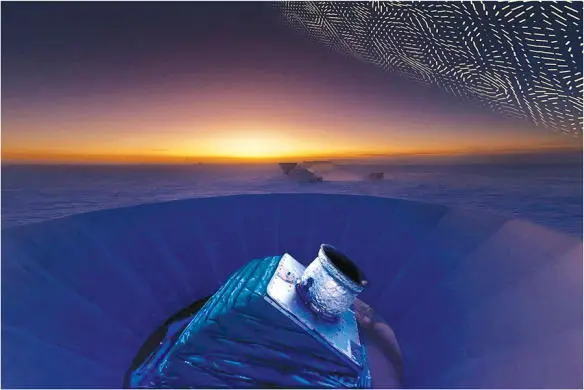
Fig. 16.10. The Bicep2 instrument, built by Jamie Bock’s team, that discovered the imprint of primordial gravitational waves. Bicep2, at the South Pole, is here shown at twilight, which occurs only twice a year at the South Pole. It is surrounded by a shield to protect it from radiation from the surrounding ice sheet. The upper right inset shows the measured imprint on the CMB: a polarization pattern. The CMB’s electric field points along the short dashed directions.
It was a fantastic discovery, but with a cautionary note: the imprint that Jamie and his team found might possibly be due to something else and not gravitational waves. As this book goes to press, intense efforts are underway to find out for sure.
If the imprint is really due to gravitational waves from the big bang, then this is the type of cosmological discovery that comes along perhaps once every fifty years. It brings us a glimpse of the universe a trillionth of a trillionth of a trillionth of a second after the universe’s birth. It confirms theorists’ prediction that the expansion of the universe at that early moment was exceedingly fast, “inflationarily fast” in cosmologists’ jargon. It ushers in a whole new era for cosmology.
Having indulged my passion for gravitational waves, having seen how they could be used to discover Interstellar ’s wormhole—and having explored the properties of wormholes, especially Interstellar ’s—I now take you on a tour of the other side of the Interstellar wormhole. A tour of Miller’s planet, Mann’s planet, and the Endurance , which carries Cooper there.
V
EXPLORING GARGANTUA’S ENVIRONS
17
Miller’s Planet

The first planet that Cooper and his crew visit is Miller’s. The most impressive things about this planet are the extreme slowing of time there, gigantic water waves, and huge tidal gravity. All three are related, and arise from the planet’s closeness to Gargantua.
In my interpretation of Interstellar ’s science, Miller’s planet is at the blue location in Figure 17.1, very close to Gargantua’s horizon. (See Chapters 6 and 7.)
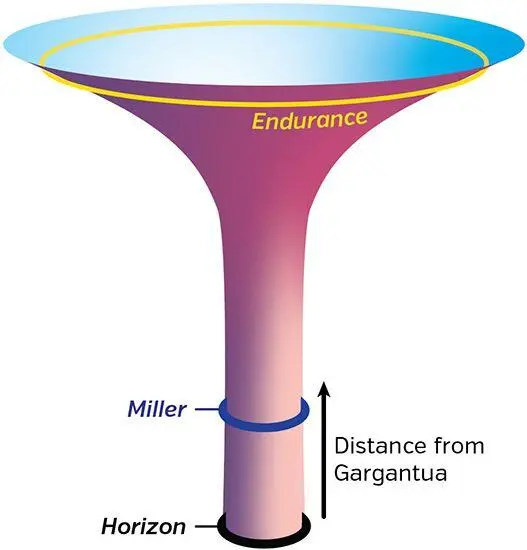
Fig. 17.1. The warped space around Gargantua as seen from the bulk, with one space dimension omitted. Also, the orbits of Miller’s planet and the Endurance , parked and waiting for the crew to return.
Space there is warped like the surface of a cylinder. In the figure, the cylinder’s cross sections are circles whose circumferences don’t change as we move nearer to or farther from Gargantua. In reality, when we restore the missing dimension, the cross sections are spheroids, whose circumferences don’t change as we move nearer or farther.
So why is this location different from any other on the cylinder? What makes this location special?
The key to the answer is the warping of time, which does not show up in Figure 17.1. Time slows near Gargantua, and the slowing becomes more extreme as we get closer and closer to Gargantua’s event horizon. Therefore, according to Einstein’s law of time warps (Chapter 4), gravity becomes ultrastrong as we near the horizon. The red curve in Figure 17.2, which depicts the strength of the gravitational force, turns sharply upward. By contrast, the centrifugal force that the planet feels (the blue curve) has a more gradually changing slope. As a result, the two curves cross at two locations. There the planet can travel around Gargantua with the outward centrifugal force balancing the inward gravitational force.
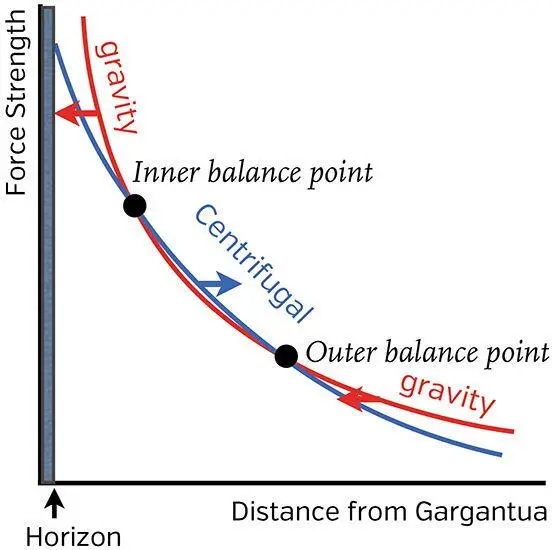
Fig. 17.2. The gravitational and centrifugal forces on Miller’s planet.
At the inner balance point, the planet’s orbit is unstable: If the planet gets pushed outward a tiny bit (for example, by the gravity of some passing comet), the centrifugal force wins the competition and pushes the planet further outward. If the planet is pushed inward, the gravitational force wins and the planet is pulled into Gargantua. This means Miller’s planet can’t live for long at the inner balance point.
The outer balance point, by contrast, is stable: If Miller’s planet is there and gets pushed outward, gravity wins the competition and pulls the planet back in. If the planet gets pushed inward, centrifugal forces win and push it back out. So this is where Miller’s planet lives, in my interpretation of Interstellar . [31] The centrifugal force depends on the planet’s orbital angular momentum, a measure of its orbital speed that is constant along its orbit (Chapter 10). In plotting how the force changes with distance from Gargantua in Figure 17.2, I hold that angular momentum constant. If the angular momentum were a bit smaller than the amount Miller’s planet actually has, then the centrifugal force would everywhere be smaller, and the two curves in Figure 17.2 would not cross. There would be no balance point, and the planet would fall into Gargantua. That’s why the location of Miller’s planet in Figures 17.1 and 17.2 is the closest to Gargantua that the planet can stably live—the location I want, in order to get maximum slowing of time. For more details see Some Technical Notes at the end of this book.
The Slowing of Time, and Tidal Gravity
Among all stable, circular orbits around Gargantua, the orbit of Miller’s planet is the closest to the black hole. This means it’s the orbit with the maximum slowing of time. Seven years on Earth is one hour on Miller’s planet. Time flows sixty thousand times more slowly there than on Earth! This is what Christopher Nolan wanted for his movie.
But being so close to Gargantua, in my interpretation of the movie, Miller’s planet is subjected to enormous tidal gravity, so enormous that Gargantua’s tidal forces almost tear the planet apart (Chapter 6). Almost, but not quite. Instead, they simply deform the planet. Deform it greatly (Figure 17.3). It bulges strongly toward and away from Gargantua.
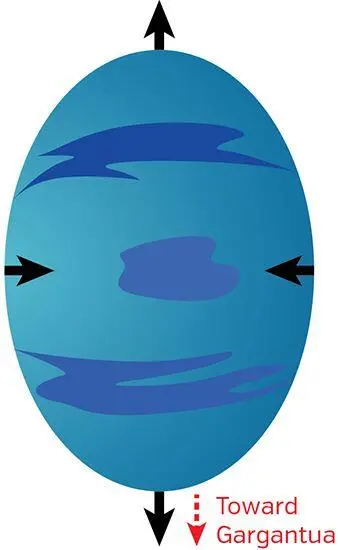
Fig. 17.3. Tidal deformation of Miller’s planet.
If Miller’s planet were to rotate relative to Gargantua (if it didn’t keep the same face toward Gargantua at all times), then as seen by the planet, the tidal forces would rotate. First the planet would be crushed east-west and stretched north-south. Then, after a quarter rotation, the crush would be north-south and the stretch east-west. These crushes and stretches would be enormous compared to the strength of the planet’s mantle (its solid outer layers). The mantle would be pulverized, and then friction would heat it and melt it, making the whole planet red hot.
That’s not at all what Miller’s planet looks like! So the conclusion is clear: In my science interpretation, the planet must always keep the same face pointing toward Gargantua (Figure 17.4), or nearly so (as I discuss later).
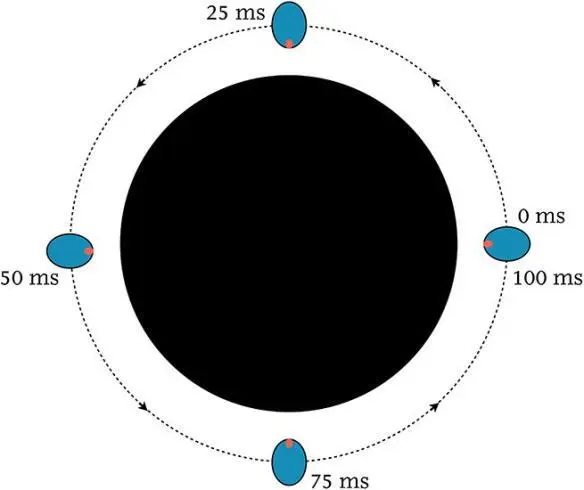
Fig. 17.4. The orbital motion and spin of Miller’s planet relative to distant stars. The red spot on the planet’s surface and the tidal bulge always face Gargantua.
Читать дальше
